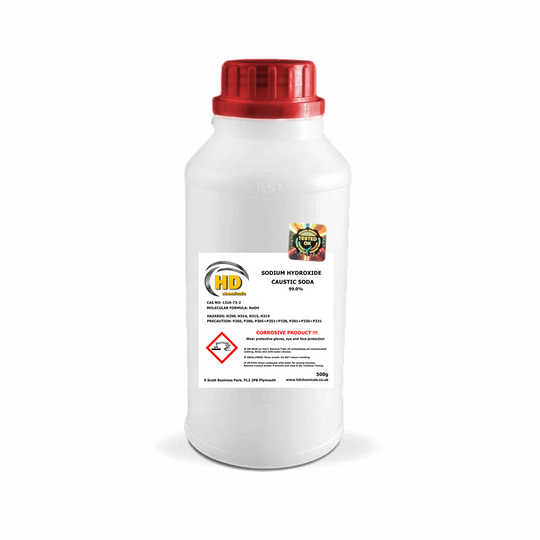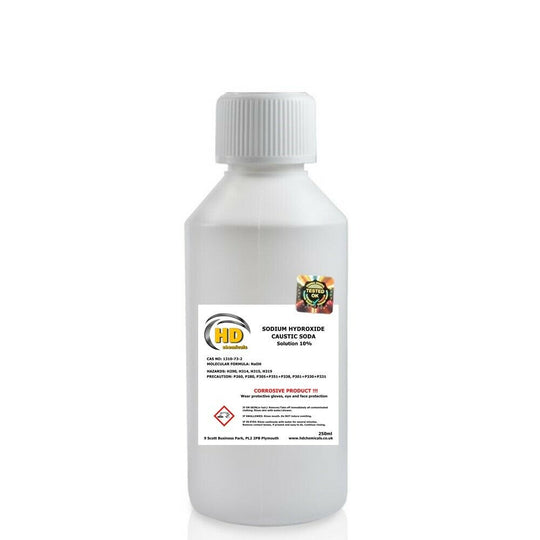Cleaning and degreasing play pivotal roles in maintaining a healthy and efficient environment, whether it's in our homes, industries, or laboratories. Among the various cleaning agents available, sodium hydroxide stands out as a powerful and versatile solution. In this blog post, we will explore the exceptional properties of sodium hydroxide and its applications in the world of cleaning and degreasing.
The Basics of Sodium Hydroxide (Caustic Soda):
Sodium hydroxide, commonly known as caustic soda, is a strong alkaline compound with a wide range of applications. Its chemical prowess lies in its ability to break down grease, oils, and organic matter, making it an ideal candidate for tough cleaning tasks.
Why Sodium Hydroxide for Cleaning?
-
Grease Dissolving Power: Sodium hydroxide is highly effective in dissolving and emulsifying grease and oils, making it a go-to choice for industrial cleaning processes where stubborn deposits need to be removed.
-
Alkaline pH: With its strong alkaline nature, sodium hydroxide helps in breaking down and saponifying fats, turning them into soap-like substances that are easier to rinse away.
-
Versatility: From cleaning ovens and industrial equipment to degreasing surfaces in households, sodium hydroxide proves its versatility in a wide array of applications.
Applications in Industrial Settings:
-
Oven and Equipment Cleaning: In industrial kitchens and bakeries, where grease and carbon deposits can accumulate on ovens and cooking equipment, sodium hydroxide is a powerful solution for breaking down and removing these stubborn residues.
-
Pipe and Tank Degreasing: Industries dealing with oils and petroleum often face challenges with greasy pipes and tanks. Sodium hydroxide can be used to clean and degrease these critical components, ensuring optimal performance.
-
Machinery Maintenance: Factories and manufacturing plants rely on sodium hydroxide to clean and maintain machinery, preventing the build-up of grease and ensuring smooth operations.
Household Applications:
-
Drain Cleaning: Sodium hydroxide is a common ingredient in drain cleaners, effectively dissolving clogs and blockages in pipes.
-
Oven Degreasing: In households, it can be used to clean ovens, removing baked-on grease and grime for a sparkling clean cooking space.
Safety Precautions:
While sodium hydroxide is a potent cleaner, it should be handled with care. Protective gear, including gloves and eye protection, should be worn, and adequate ventilation is crucial to prevent inhalation of fumes.
The concentration of sodium hydroxide used for cleaning and degreasing can vary based on the specific application and the level of cleaning required. Sodium hydroxide is a strong base, and its concentration is typically expressed in terms of weight per volume (grams per liter). Here are a few examples:
-
Industrial Equipment Degreasing:
- In industrial settings, a sodium hydroxide solution with a concentration of 5-10% w/v (weight/volume) or approximately 50-100 g/L might be used for degreasing heavy machinery and equipment.
-
Oven and Grill Cleaning:
- For cleaning ovens and grills, a more concentrated solution may be used. A sodium hydroxide solution with a concentration of 20% w/v (200 g/L) or higher can be effective in breaking down tough grease and carbon deposits.
-
Pipe and Drain Cleaning:
- Commercial drain cleaners often contain sodium hydroxide at concentrations ranging from 10-30% w/v (100-300 g/L) to effectively dissolve organic matter and clear blockages in pipes.
-
Surface Degreasing:
- In general surface cleaning, a solution with a concentration of 1-5% w/v (10-50 g/L) might be suitable for removing grease and grime from surfaces such as floors, walls, and countertops.
-
Automotive Parts Cleaning:
- For degreasing automotive parts, a sodium hydroxide solution with a concentration of 5-15% w/v (50-150 g/L) may be used to remove oil and grease from engine components.
-
Aluminum Cleaning and Etching:
- In aluminum cleaning and etching processes, a solution with a concentration of around 2-5% w/v (20-50 g/L) can be employed to remove oxides and contaminants from the surface.
-
Laboratory Glassware Cleaning:
- In laboratories, a milder solution with a concentration of 1-2% w/v (10-20 g/L) might be used for cleaning glassware to remove organic residues.



Please be careful when preparing high-concentration solution of NaOH or KOH. The temperature will initially rise significantly (close to the boiling temperature of water) which may cause burns and release of fumes of concentrated aklali.